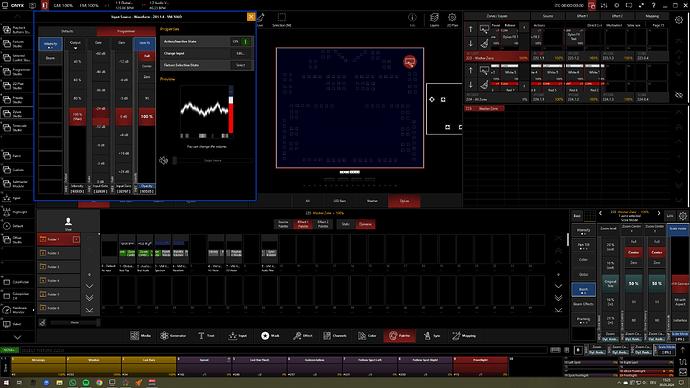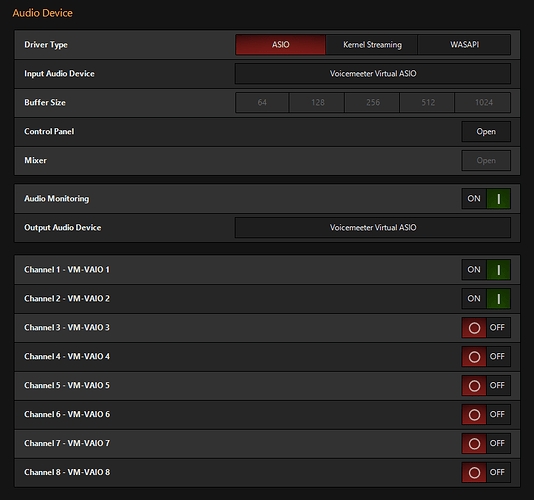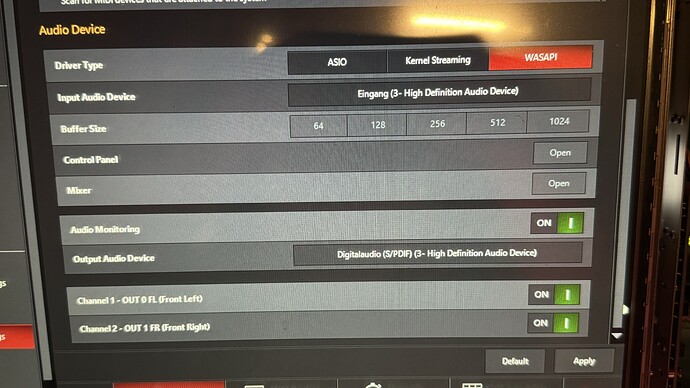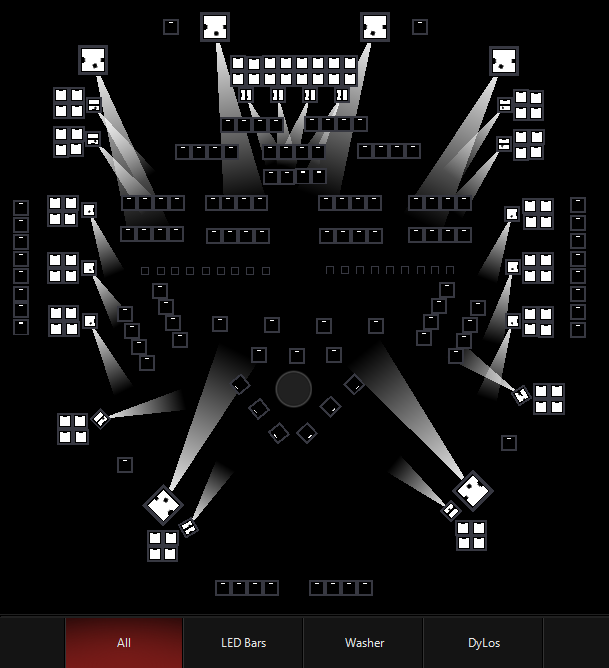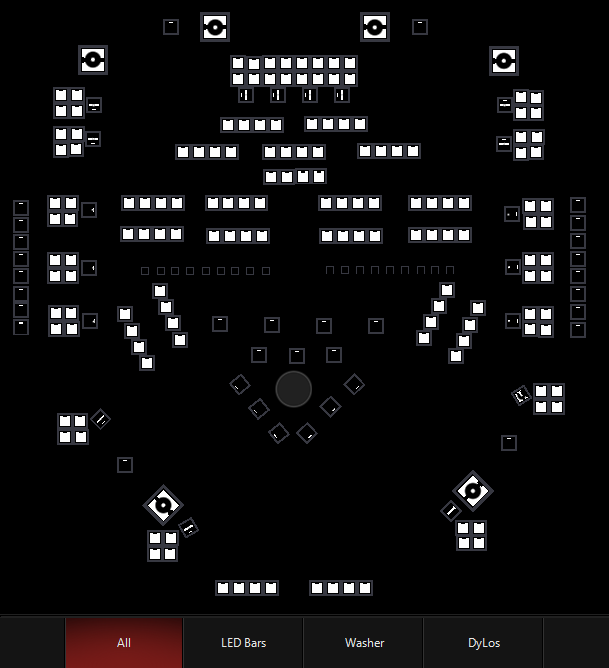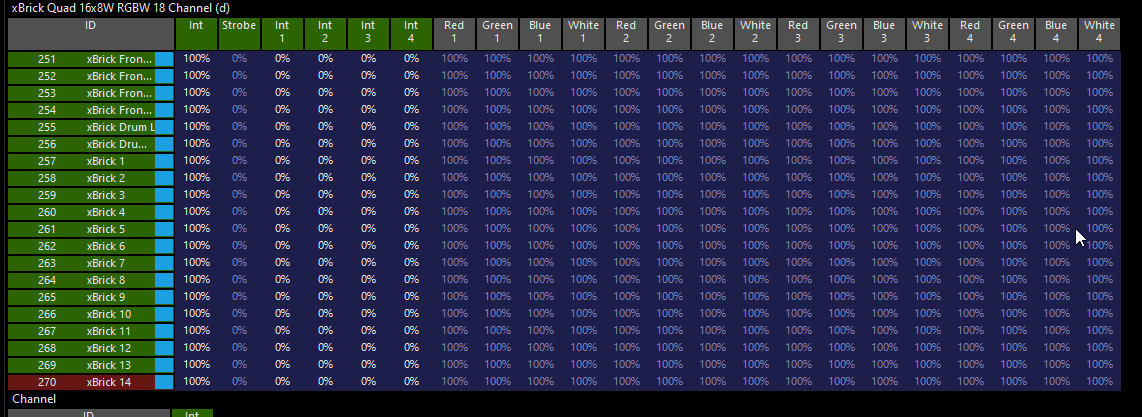Hello Obsidian Team,
both in preprogramming and during a show, Dylos has crashed several times when I play with the new audio inputs.
The Dylos and input windows have a display error.
The old Global BPM Trigger and the new Audio BPM are frozen.
Audio Input Source is frozen.
Everything else not related to Dylos or Audio still works, but a restart of the software is still necessary.
To do this, the Dylos pixel effects engine must first be closed in the Task Manager (Win 10 Pro).
I cannot consciously reproduce the error, but if the Dylos pixel effects engine is running and you close it in the Task Manager, you get exactly the same error.
Seems like the pixel engine hangs when I switch between inputs.
What can I do to rectify the error, or how can I contribute to it?
If you have any further questions, please do not hesitate to contact me.
ok, the engine now crashes too reliably for me to make a log.
Regards
Chris
Hello Chris,
In order to help you I have a few questions, to be able to understand your problem better:
- What do you mean with switching inputs? Did you switch the input of an input processor or the audio channel or the audio device?
- Did you try to switch inputs (e.g. between tap beat and audio beat detection) via a Reference slot? (in general a Reference slot is the better choice for dynamic switching of inputs, as you can map it on a function key for convenience)
- Do you experience crashes with the Reference slot, too?
- Do you run DyLOS on a console or a PC?
- What kind of audio device do you use and which protocol (ASIO, Kernel Streaming or WASAPI)?
- Is the audio device used by a different app on your computer at the same time?
- Do you have sample-rate changes in the incoming audio stream?
In case the email did not arrive. [#575199]
Hello,
- What do you mean with switching inputs? Did you switch the input of an input processor or the audio channel or the audio device?
In screenshot 1, I only used the left mouse button to switch through the different waveforms.
- Did you try to switch inputs (e.g. between tap beat and audio beat detection) via a Reference slot? (in general a Reference slot is the better choice for dynamic switching of inputs, as you can map it on a function key for convenience)
are the reference slots that can be seen in screenshot 1, right? I changed exactly these when the pixel engine crashed. I also saved these slots in different cues and when I changed the cues it also crashed. Not reliably, but from time to time.
- Do you experience crashes with the Reference slot, too?
Yes
- Do you run DyLOS on a console or a PC?
I have a PC in my office and my customer has a PC in his club. There have already been crashes on both PCs.
- What kind of audio device do you use and which protocol (ASIO, Kernel Streaming or WASAPI)?
In my office I have Spotify running for programming + a software called Voicemeeter which sends the audio to Onyx. Onyx receives via ASIO, as you can see in screenshot 2.
Voicemeeter is not installed in the club, a Chinge cable goes directly into a sound card. Unfortunately I am not sure which protocol is used in the Club.
- Is the audio device used by a different app on your computer at the same time?
I don’t think so, except for Voicemeeter, which sends the signal to my speakers and Onyx.
Is there a better recommended app for transferring sound from my PC (Spotify) to Onyx?
I don’t think this app causes the Pixel engine to crash, as it is not installed in the club and there has already been a crash.
- Do you have sample-rate changes in the incoming audio stream?
Unfortunately, I don’t know how to check this. Could you explain it to me briefly?
Since I’m not very audio-savvy, I don’t think I’ve made any changes here.
Thanks a lot!
Chris
Hi Chris,
I tried Voicemeeter on my sytem. By this I found out that Onyx is currently not supporting ASIO buffer sizes greater than 1024 samples. Voicemeeter sets it by default to 2048, which needs to be fixed in a coming maintenance release. As a workaround you can set it manually in Voicemeeter (see screenshot). A size of e.g. 256 is a good starting point (less means lower latency, but if you experience drop-outs you need to choose a bigger buffer size on your system).
Sample-rate changes mostly only happen if you take in a digital audio signal via SPDIF, ADAT, etc into your audio interface or change the audio device settings while running Onyx. Onyx supports this but needs a few seconds to restart its internal engine in that case.
Still I cannot reproduce your problem on my system. Would it be possible for you to PM me the showfile that is causing the problem?
Thanks,
Chrisian
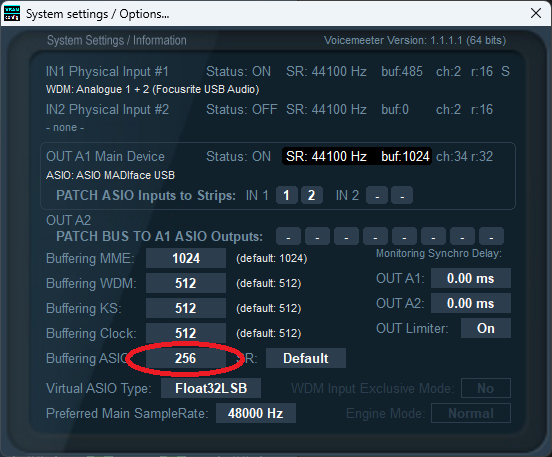
Hello Christian,
Did you receive my showfile by e-mail?
Whenever I reply to the mail, a new number is opened.  #475681
#475681
In my office, I have adopted the settings for Voicemeeter as shown in the screenshot. It still crashes.
I have also taken a picture of the settings in the club.
Sincerely
Chris
Hi Chris,
I could now reproduce your problem on one system. It looks like the next maintenance build will not have that problem anymore, but we’re still busy investigating.
Did you start building this show-file on a beta version?
Best,
Christian
That sounds good.
I’ve been working for the club for about 15 years. back then with M-PC.
showfile has been growing for just as long.
So much time and work goes into it that it’s important to me to keep it. To make sure that everything runs smoothly, I don’t install a beta either.
Kind regards
Chris
Could you please try the newest maintenance release (build 1268) to see if your issues are fixed? I couldn’t reproduce your issue on my system any more in build 1265, so I couldn’t validate it. If crashes are still happening please let me know.
Hello Christian,
Thanks for the new version.
I played around with Dylos and the audio input and could not find any crashes of the PixelEngine so far.
However, I have discovered a new problem that I can’t explain.
My Led Bars are patched with virtual dimmers because they have segments, as I have programmed the dimmer for each individual segment, while the main dimmer is always set to 100% by default.
In version 1265 it looks like the picture “Led Bars V 4.10.1265”.
In version 1268 it looks like the picture “Led Bars V 4.10.1268”.
When I played with Dylos, I wanted to dim down my Led Bars, but instead of going to 0%, they change to 100% white.
My first look in this case goes to the default values, but these are displayed exactly the same in both versions (Scrennshot “Default V4.10.1265 + 1268”).
Do you still have my showfile?
You can see the effect if you select a color for the xBrick segments and change their dimmer between 0 and 100% while the MainDimmer is set to 100%. You will see that they behave as I would expect in V1265 and not in V1268.
I installed V1268 as normal - 1265 was still installed - “Update Dylos Attributes” Yes - “Save showfile” Yes
Can you help me to dim the segments normally again?
Thank you very much!
Chris
Here again how my virtual dimmers look like in V 4.10.1268.
Virtual Dimmer 100%
Virtual Dimmer 0%
Hello, we’ve noticed and fixed an issue with virtual dimmers on specific types of multi-part fixtures. Please check again with 4.10.1269, which will be published soon.
